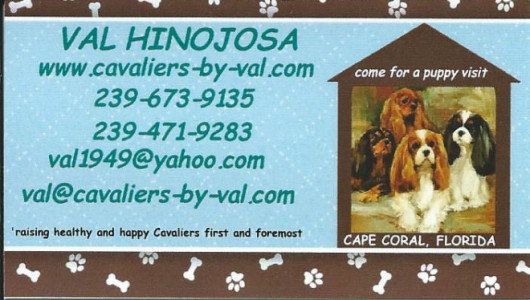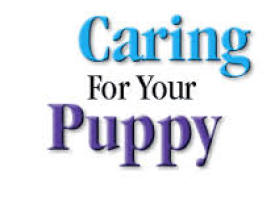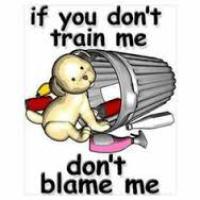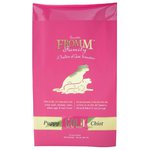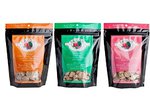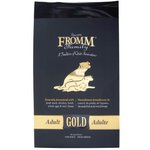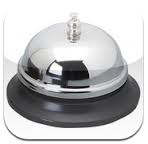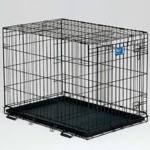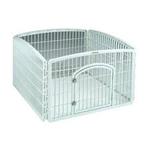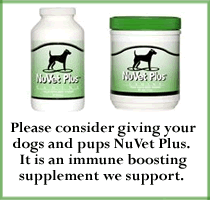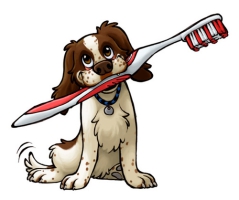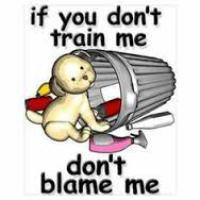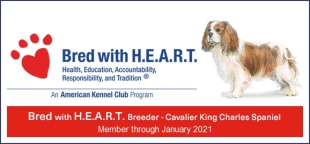PLEASE UNDERSTAND, OUR RESPONSIBILITY DOES NOT END WHEN YOU LEAVE HERE WITH YOUR PUPPY. OUR PHONE NUMBERS AND EMAIL ADDRESSES ARE ON OUR WEBSITE AND
BUSINESS CARDS FOR A PURPOSE! CALL US OR EMAIL ANYTIME YOU ARE EXPERIENCING ANY DIFFICULTY WITH YOUR PUPPY. WE HAVE RESOURCES THAT WE CAN BRING TO BEAR TO HELP YOU. YOUR CONCERN OR
QUESTION IS OUR CONCERN OR QUESTION. WHEN YOU ARE GETTING READY TO GO HOME WITH YOUR NEW LITTLE ONE, THE SHEER EXCITEMENT OF BRINGING YOUR LITTLE ONE HOME IS VERY OVERWHELMING. ALTHOUGH
WE HAVE SPENT TIME WITH YOU GOING OVER CERTAIN THINGS YOU SHOULD AND SHOULD NOT DO, MOST OF IT WILL NOT BE HEARD. GO THROUGH YOUR FOLDER, THERE IS A WEALTH OF INFORMATION THERE, IF YOU CAN'T
FIND YOUR ANSWER, PICK UP THE PHONE AND CALL US, OR EMAIL US. WE ARE HERE FOR YOU. OUR COMMITTMENT TO YOUR FAMILY AND YOUR PUPPY DOES NOT END WHEN YOU LEAVE, IT CONTINUES AS LONG AS YOU WANT TO
COMMUNICATE WITH US. DON'T LEAVE AN UNASKED QUESTION OR CONCERN BE LEFT UNSOLVED OR UNANSWERED.
Cavalier Temperament and
Personality
The Cavalier King Charles Spaniel is small, loving
and playful. The typical Cavalier is always happy, trusting and easygoing, a friend to everyone he meets. True to their heritage as “comforter dogs,” Cavaliers love to be in a lap.
Cavalier temperament ranges from sweet and placid
to hard-charging and even stubborn. The sweet, placid Cavaliers sometimes have a reputation for being dumb, and the stubborn ones for being untrainable, but in general, these dogs are smart and learn
quickly. They respond well to positive reinforcement techniques, especially when food rewards are offered, but harsh words will cause them to stop trying or even to hide. A Cavalier should usually
never be shy or aggressive to people or other dogs.
A few things to know about Cavaliers: they
love to lick, they love to chase moving objects (especially feathered ones) and they can be manipulative when they want food (those eyes!). It’s difficult or impossible to curb these behaviors so you
need to find a way to work around them, such as always keeping the dog on leash in areas with traffic and hardening your heart when your Cavalier wants to share your French fries.
The Cavalier is not perfect. Any dog, no matter how
nice, can develop obnoxious levels of barking, digging and other undesirable behaviors if he is bored, untrained or unsupervised.
Start training your puppy the day you bring him
home. Even at eight weeks old, he is capable of soaking up everything you can teach him. Don’t wait until he is 6 months old to begin training or you will have a more headstrong dog to deal with. If
possible, get him into puppy kindergarten class by the time he is 10 to 12 weeks old, and socialize, socialize, socialize. However, be aware that many puppy training classes require certain vaccines
(like kennel cough) to be up to date, and many veterinarians recommend limited exposure to other dogs and public places until puppy vaccines (including rabies, distemper and parvovirus) have been
completed. In lieu of formal training, you can begin training your puppy at home and socializing him among family and friends until puppy vaccines are completed.
5 Natural Remedies to Help Your Itchy Dog
You know the sounds.
They’ve kept you up at night. “Scratch, scratch, scratch, lick, lick, chew, chew.” Your dog is itching like crazy and it’s driving you both up a wall! Chronic or severe itching and scratching can
have many causes. Some may
require a checkup by your veterinarian, while others may be remedied at home! If the itching has been on-going, is causing your dog to be miserable or if your dog is developing self-inflicted wounds
due to the itching, it is most definitely time for a visit to the vet!
Your vet will determine
the root cause of the itching and may be able to prescribe you prescription or over-the-counter medications or bathing products. If the itching is seasonal, intermittent or less severe, you may be
able to use these at-home tricks to give your dog some natural relief!
Chamomile & Herbal Tea Soaks
- Chamomile, calendula, and green tea have properties that soothe and cool irritated skin. These soaks are best for dogs who have
hot, itchy patches of skin that are at risk of getting rubbed raw.
- If your dog is inconsolably itchy all over, fill up your tub or sink with warm water and let several herbal tea bags steep for
three minutes. Remove the tea bags and let your dog soak in the bath for at least five minutes.
- Alternatively, for smaller itchy patches, steep one or two tea bags in about two cups of hot water. Once the tea is cooled
down, pour it on your dog’s skin as a quick fix, letting it drip dry without rinsing.
50/50 Apple Cider Vinegar Water Spray
- Apple cider vinegar (ACV) is a natural, safe relief for especially dry, itchy skin. The antiseptic and antifungal nature of
apple cider vinegar makes it a great form of relief from poison ivy but NOT on raw or opened skin. (If your dog has itched himself or herself raw, this solution will sting the exposed
wound.)
- To avoid getting vinegar in any open cuts, fill a spray bottle with 50% water and 50% ACV to target affected areas. If your dog
walked through a patch of poison ivy, oak, or sumac, soak their paws in the solution for up to five minutes.
Oatmeal Bath
- Oatmeal is an age-old remedy for our dry, itchy skin that happens to be safe for use on our canine friends, too! In fact, most
doggie hypoallergenic shampoos include oatmeal as an active ingredient to soothe and fight irritation.
- Start by grinding plain oatmeal into a powder to sprinkle in your dog’s warm bath. The oatmeal will typically take 10 to 15
minutes to cool down red, angry skin no matter the cause. It is also nontoxic, so it’s okay if your pet licks some off during their long bath. If this sounds like a long time for your pup to be in
the tub without a struggle, try some of our techniques to Curb Bath Time Fears.
- Another option to avoid a full-on bath is to make an oatmeal paste. Take your ground oatmeal and add a little bit of water at a
time until you are left with a paste that has a spreadable consistency. Target spots that have been bothering your dog and make sure the paste contacts the skin on longer-haired dogs for maximum
relief.
Plain, Sugar-Free Yogurt
- Feeding your dog plain, unsweetened yogurt offers many health benefits. Some yeast infections and skin irritation can stem
from your dog’s digestive system. This remedy is good for dogs who have certain rashes, hives, or allergies.
- Feeding small dogs one teaspoon of yogurt and big dogs two teaspoons once a week will improve their overall gut health. Most
dogs like the taste of yogurt on its own, but it can also be mixed with food to help digestion.
Coconut Oil
- Many natural beauty products now contain coconut oil because of its antibacterial and antifungal properties. It is also an
excellent moisturizer for canines as the oils can penetrate fur for direct contact to the skin. Dogs who are suffering from eczema, allergies, yeast infections, and even insect bites and stings can
all benefit from direct application of coconut oil.
- Put coconut oil in the fridge or a cool, dry place so it turns completely solid. For quick relief to dry skin, massage the oil
into the coat and skin of your dog where they are suffering. You will notice your dog’s coat improving along with their relief from the constant itching!
These at-home remedies
are safe for most dogs and most skin issues; however, you should always consult your veterinarian
before using one of these treatments on your pet. A proper diagnosis is key to providing the most effective treatment for your dog’s itchy skin. Once you’ve consulted with your veterinarian, feel
free to try any combination of these remedies, as they are all non-toxic and natural!
NUTRITION.....CLICK ON PICS FOR LARGER IMAGES
FEEDING SCHEDULE GUIDELINES
FEED 1/3 TO 1/4 CUP FROMM PUPPY KIBBLE 3 TIMES A DAY UNTIL THE PUPPY IS 4 MONTHS OF AGE.
THEN CHANGE TO 2/3 CUP FROMM PUPPY KIBBLE TWO TIMES A DAY UNTIL PUPPY IS ONE YEAR OLD.
AT ONE YEAR, CHANGE TO FROMM GOLD ADULT KIBBLE, 1/2 CUP TWICE DAILY.
FEEDING TIME SCHEDULE GUIDELINES
TEN WKS TO FOUR MONTH OLD PUPPIES FEED BETWEEN 8:00 a.m. and 9:30 a.m. FEED BETWEEN 12:00 p.m. and 1:00 p.m. FEED BETWEEN 5:00 p.m. and 7:00
p.m.
POTTY SCHEDULE GUIDELINES FOR PUPPIES FOUR MONTHS AND YOUNGER
TAKE OUT FIRST THING IN THE MORNING. FEED YOUR PUPPY. WAIT TEN OR FIFTEEN MINUTES. TAKE BACK OUT FOR POTTY. FEED LUNCH. WAIT TEN OR
FIFTEEN MINUTES. TAKE OUT FOR POTTY. FEED DINNER. WAIT TEN OR FIFTEEN MINUTES. TAKE OUT FOR POTTY. LAST TIME OUT FOR POTTY BEFORE BEDTIME. ALSO YOUNG PUPPIES NEED TO GO OUT AFTER PLAY TIME AND AFTER
TAKING A NAP.
How to Teach a Dog to Potty Outside
Teaching a dog of any age to go potty outside seems like a daunting task for first-time dog owners … or anyone that's adding a new four-legged friend to their family. And although it
may seem natural to us humans that dogs use the outside as a bathroom, it's not coded in doggie DNA to seek out only your grass, and not a rug, to do their business. Dogs need to be taught—with
patience, understanding, and an enormous amount of positive reinforcement—to go
outside.
With these four easy tips you can help any dog decide to use your yard instead of your carpet when doodie calls (yep, I did
that).
4 Tips to Help Teach Your Dog to Go Potty Outside
Before you get started, ensure your yard or designated outdoor potty area is dog-friendly and any spaces in your home your canine student will relax in are dog-proofed and suited to their individual needs.
1. Use a Bell
I am a huge fan of bell training for potty purposes. Essentially, you teach your dog to ring a bell (attached to a strip or string near the door) whenever she needs to go
outside to potty. You can also place a bell on the floor near the door. I have found great success over the years and continue to use "potty bells" for any new puppy I bring home. The
bell can quickly become a clear way for your dog to tell you they need a potty break.
Training a dog to use a bell is simple with these three steps:
Step 1: Teach your dog to "nose target" the bell to make it jingle.
Hold the bells close to your dog's nose and let them investigate. If they sniff, touch, or boop the bell, mark and reinforce with a favorite treat. Repeat. After several repetitions, move the bell further away so that your
dog must take a few steps towards it to touch it. If bell is on floor,teach puppy to sit and ring bell with paw or nose. Step 2: Once your doggo is touching the bells to get a tasty treat, hang the bells on the doorknob of door they will
use to go outside. Encourage them to touch the bell as it hangs from the doorknob and when they do, mark and reinforce!
Step 3: Now they need to understand that the bell ringing means the door opens to go outside. The moment your pup touches the bell,
open the door, take him outside and give him a treat. If he potties, give him another treat and then immediately go back inside. Repeat this each time you want your pup to go outside, but be sure you
are not waiting for him to ring the bell until he is so full he might have an accident while he waits for the door to open.
2. Get the Timing Right
Understanding when a dog, especially a young puppy, will need to use the bathroom is crucial to successful potty training and will help create a potty-time schedule. Knowing when they might need to go helps you avoid accidents. Look for behaviors like sniffing the ground,
pacing, whining or whimpering, jumping up on you or following you,
becoming more mouthy during play, moving away from you, or quickly running towards another space. These can be indicators a dog needs to pee or poop. There are also
times before and after daily events your dog must be let outside.
Dogs need to go outside AFTER these key moments:
Dogs need to go potty BEFORE these key moments:
-
Before going to bed at night (no more than 10 minutes before
bedtime!)
-
Before being crated or kenneled
-
Before a training session or puppy class
-
Before friends or family come over for a visit
-
Before going inside the vet office
3. Remain Positive
When dogs are just learning to pee or poop outside you need to constantly provide treats and praise and should never use
punishment. Avoid scolding or harsh corrections when your dog has an accident, otherwise you only increase the likelihood they will get better at hiding where they potty inside
instead of getting better at peeing outside. Plus, whenever you get upset with your canine you only break the bond you are trying to build with them. Focus on teaching them what to
do instead of what not to do.
Give them a tasty treat and praise when they go to the door to let you know they need outside. Each time they use the potty bell, give lots of good praise, and every time
they successfully go potty outside give them a favorite goodie. Make sure you reinforce them for making the choice to go potty outdoors consistently, especially during the first few months of
training.
Remember your dog is learning and you are living with a
totally different species that doesn't innately understand their toilet should be your grass. It is your job to know when they might need to use the green facilities and it is not your dog's job to
teach you. Be patient and keep the whole process laid-back and full of positive reinforcement opportunities.
4. Clean, Clean, Clean
Accidents happen and they are no big deal! Your floor will survive and your dog can learn with patience and understanding that there are better spots for their pee. Just make sure to
thoroughly clean accident spots and keep your pup's
space clean and tidy and free from any item that might be soiled. Launder any bed or stuffed animals that might have been accidentally soaked.
Things You Definitely Need When You're Teaching Your Dog to Pee Outside
To make your potty training journey a little easier, stock up on these essential items.
Carpet Cleaners
The smell of doggie accidents is no treat for anyone, including your pup, and lingering odors can even entice your dog to use that same spot as a bathroom again. You need to make
sure that any soiled areas are thoroughly cleaned. Avoid using any product
that contains ammonia. Although it is a common ingredient in many cleaning products it also happens to be a chemical in urine, and so it only increases the likelihood your dog will urinate in that
same spot again.
It is best to use an enzymatic pet stain and odor remover to clean up your furry pal's urine. These cleansers break down the bacteria in the urine and help eliminate the scent, which is crucial to reducing your dog's desire to re-use
the same spot for his potty business.
Baby Gates
When your dog needs to rest, or you are not sure if they are "empty" and could have to potty while you make dinner, use baby gates to safely confine them to a space. Block off the
entrance to a bedroom with a walk through gate or make a dog-friendly pen in your living room. This way your canine doesn't have free access to your home, decreasing the chances he will take advantage of your lack of attention and use the carpet in
your office as a toilet.
Kennel or Crate
Your dog's crate or kennel makes a good resting place after play sessions or while you do chores around the house and can't fully supervise your fur baby. They also work well to help
a new pup relax between potty training breaks, especially if they didn't eliminate when you thought they probably should. Place them in a room where you can still easily see your dog so you can be
sure to let them outside to try and potty if you hear them moving about or starting to whimper. Just make sure your dog's crate is the perfect size for them and they are fully comfortable with crate training before you require them to hang out in there for any period of time.
Potty Bells
Potty bells hung from your door and/or floor can make potty training a breeze.
Treats
To encourage a young pup or your new rescue baby to continue to go outside and potty, give them a great reinforcer right when they start to go. As they begin to tinkle say
"good potty," and as soon as they finish, offer a delicious treat. This makes the whole experience a positive reinforcement opportunity for your canine buddy.
Although successful potty training takes time, plenty of patience, and lots of positive reinforcement, it can be a simple process when you are well-prepared. Making sure
your canine family member has great potty skills goes a long way in ensuring both you and your dog are living a happy, relatively clean and stinky-carpet-free, life
together.
Standard Cavalier height is between 12 and 13 inches tall and the
breed's average weight varies between 10 and 18 pounds. Generally female cavalier puppies stop growing in physical size and height at around 18 months and male puppies can take up to around two
years.
How Many Times a Day Should You Feed Your Puppy?
The amount of times you choose to feed your puppy a day can be tricky. Online, advice can vary, from a
standard twice-a-day morning and night schedule to even a "go with the flow" approach - it's pretty confusing. Every puppy is different, and a veterinarian and your breeder should always properly
assess your dog's needs based on their breed and unique situation. But there are general rules of thumb to follow when it comes to making sure your puppy is getting the right amount of food per day at the right
moments.
Dogs"have the highest energy requirement of their entire life" during the weaning age and
in puppyhood. When it comes to their
feeding schedule, "puppies can become hypoglycemic (low blood sugar) after a short fasting period, so frequency is important." Puppies should be fed three to four times a day in smaller
portions until approximately 6 months of age. After that, a slow reduction to twice a day during adulthood will make sure your growing dog stays in tip-top shape. Puppies less than 8 weeks of age,
the stomach is very small and can't hold much food, plus their liver is still underdeveloped and there are high risks for hypoglycemia. For these reasons, it is extremely important to feed them small
portions approximately every four to five hours." But once puppies get older, you "can start decreasing the frequency."
It is also imperative to feed your dog the recommended food from the get-go. We also recommend giving
your puppy and adult NuVet Plus to help support their immune system. Do Some Puppies Need to Be Fed More Frequently?
Even if feeding your puppy three to four times a day already sounds like a lot, smaller-size breeds may
need even more frequent feedings to ensure their energy requirements are met. Smaller breeds have smaller stomachs, so they need more frequent feedings, while bigger breeds in turn have larger
stomachs and need less frequent feedings." By assuring your puppy is getting adequate doses of nutrient-rich food at the right times, you'll not only have a happier pup but a
healthier, more balanced one, too.
As a quality breeder, my priority is the health of the dogs I breed.
Part of that responsibilty includes doing everything I can to insure their wellbeing after they go to their new home.
While all quality dog foods will provide everything needed to sustain life, virtually all of them are cooked during the manufacturing process. The heat from
the cooking causes much of the nutrients to be lost during the process. NuVet Plus cold processsed allowing all the benefits of its rich nutrients to be retained, giving your new puppy an extra layer
of protection, espcially during the most critical first year of life. Additionally, when puppies nurse, they rely on their mother's colostrum (highly nutritious milk produced right after
birth) for the anitbodies they need to fight infection. However, the maternal antibodies' effectiveness declines as the puppy's immune system begins to mature. By 8 weeks, your puppy's immune system
is at a vulnerable point and will soon be challenged on multiple fronts. When a puppy is moved away from its mother and siblings to live with its new
family, the immune system is weaken by the stress of adoption and exposure to bacteria and viruses in its new home. These pathogens for which the puppy's body has not yet developed antibodies, and it
is widely recognized that the immune system is less effective in times of stress. So giving NuVet Plus is important to helping your puppy grow into a healthy adult. The vaccine
series is also started during this time period. Vaccines are only efffective if the immune system can respond properly. If the immune system is distracted by combating an actual disease processor and
it does not receive the nutrients required to keep it strong during times of stress, the health of the puppy is at risk. The best way to prevent illness during this critical time is to provide the
nutritional support required for proper immune system function.
NuVet Plus is a synergistic combination of antioxidants, vitamins, and minerals know to boost immune system function. All of
NuVet Labs' ingredients are sourced in the United States, manufactured in a human-grade U.S. FDA registered pharmacetical laboratory, and cold processed to maximie the potency of the nutrients. NuVet
Labs has been in business since 1997 and has never had a product recall. By including NuVet Plus into your puppy's daily diet, you can be confident that you are providing the nutrients required for
optimal immune system support performance.
Hypoglycemia Requires Quick Intervention in Toy Breeds
Toy-breed dogs are not only at risk for hypoglycemia, they can die from the low blood sugar disorder if they do not receive prompt
treatment.
When a dog’s blood sugar, or glucose, level drops, it can affect neurological function. Disorientation, tremors and coma may occur.
Normally, hormones stimulate the breakdown of stored glycogen to supply the brain and other tissues with fuel. In toy breeds, this process may not happen fast enough, and hypoglycemia
results.
Juvenile hypoglycemia occurs in puppies less than 3 months of age. Because puppies have not fully developed the ability to regulate blood
glucose concentration and have a high requirement for glucose, they are vulnerable. Stress, cold, malnutrition and intestinal parasites also may trigger juvenile hypoglycemia.
Signs of hypoglycemia are loss of appetite, extreme lethargy, lack of coordination, trembling, muscle twitching, weakness, seizures, and
discoloration of skin and gums. Most dogs will not eat or drink when they are in low sugar shock.
Simple cases of hypoglycemia can occur when a dog is overly active with too much time between meals or fasts before vigourous exercise.
Hypoglycemia also may occur secondary to another condition. Other causes include Addison’s disease, insulin-producing tumors of the pancreas, severe liver disease, and glycogen storage diseases. If
an underlying illness causes hypoglycemia, veterinarians first treat this condition.
Veterinarians are likely to conduct a complete medical history and physical examination to determine the cause in dogs that develop chronic
hypoglycemia. Other tests include a complete blood count, blood glucose concentration, urinalysis, routine biochemistry, and blood insulin concentration.
An ultrasound may be taken of the abdomen to try and identify a pancreatic or other type of tumor that could cause
hypoglycemia.
Puppies and adult dogs that appear to be in a stupor or coma during a hypoglycemic attack should immediately be given sugar water or an oral
concentrated solution of glucose, such as corn syrup or Nutri-Cal. Owners of toy breeds should have a glucose source readily available. In an emergency situation, owners should dab sugar water on or
under the tongue. The sugar is absorbed directly through the tissue into the bloodstream.
Breeders and owners should proactively look for signs of hypoglycemia in their puppies and should frequently feed toy-breed puppies as a
preventive measure. Breeders also are encouraged to include information about hypoglycemia in packets they send with puppies going to new homes. Sharing information may help save a dog’s
life.
Signs of
Hypoglycemia
-
Loss of appetite
-
Extreme lethargy
-
Lack of coordination
-
Trembling
-
Muscular twitching
-
Weakness
-
Seizures
-
Unusual behavior
-
Dilated pupils
-
Stupor or coma
* Chocolate which can cause seizures in dogs. * Coffee and tea can cause similar problems as chocolate.
* Raisins and grapes can cause kidney failure. * Nutmeg can also cause seizures.
* Raw eggs could contain salmonella, so they are not worth the risk.
* Onions are not advised as they can interfere with blood circulation.
* Macadamia nuts can cause dogs
to have tremors and lead to paralysis.
* Other foods cautions include moldy foods, yeast dough and fruit pits. Many fruit pits contain cyanide.
* Xyitol - Found in
sugarless gum and candy. Sympotoms mimic hyploglycemia. Deadly. * Coca Mulch for gardens - Highly toxic and lethal to dogs.
Plants that should be avoided!
Bulbs
Amaryllis, Autumn Crocus, Daffodil, Day Lily, Elephant Ears, Gladiolas, Hyacinth, Iris,
Lily of the Valley, Narcissus, Orange Day Lily, Tulip
Ferns
Asparagus Fern, Australian Nut, Emerald Feather (aka Emerald Fern), Emerald Fern
(aka Emerald Feather), Lace Fern, Plumosa Fern
Flowering Plants
Cyclamen, Hydrangea, Kalanchoe, Poinsettia
Garden Perennials
Charming Dieffenbachia, Christmas Rose, Flamingo Plant, Foxglove, Marijuana, Morning Glory,
Nightshade, Onion, Tomato Plant, Tropic Snow Dumbcane
House Plants
Ceriman (aka Cutleaf Philodendron), Chinese Evergreen, Cordatum, Corn Plant (aka Cornstalk Plant),
Cutleaf Philodendron (aka Ceriman), Devil's Ivy, Dumb Cane, Golden Pothos, Green Gold Nephthysis,
Marble Queen, Mauna Loa Peace Lily, Nephthytis, Peace Lily, Red-Margined Dracaena,
Striped Dracaena, Taro Vine, Warneckei Dracaena
Lilies
Asian Lily (liliaceae), Easter Lily, Glory Lily, Japanese Show Lily, Red Lily, Rubrum Lily,
Stargazer Lily, Tiger Lily, Wood Lily
Pittosporaceae: Genus: Pittosporum
- All parts are poisonous if ingested. Rubbing up against plant may cause skin irritation or allergic reactions
Shrubs
Cycads, Heavenly Bamboo, Holly, Jerusalem Cherry, Mistletoe "American", Oleander, Precatory Bean, Rhododendron, Saddle Leaf Philodendron, Sago Palm, Tree Philodendron, Yucca
Succulents
Aloe (Aloe Vera)
Trees
Avocado, Buddist Pine, Chinaberry Tree, Japanese Yew (aka Yew), Lacy Tree, Macadamia Nut,
Madagascar Dragon Tree, Queensland Nut, Schefflera, Yew (aka Japanese Yew)
Vines
Branching Ivy, English Ivy, European Bittersweet, Glacier Ivy, Hahn's self branching English Ivy, Needlepoint Ivy
Miscellaneous / Uncategorized
American Bittersweet, Andromeda Japonica, Azalea, Bird of Paradise, Buckeye, Caladium
Hortulanum, Calla Lily, Castor Bean, Clematis, Fiddle-Leaf Philodendron, Florida Beauty, Fruit Salad Plant,
Golden Dieffenbachia, Gold Dust Dracaena, Heartleaf Philodendron, Horsehead Philodendron, Hurricane
Plant, Mexican Breadfruit, Mother-in-law, Panda, Philodendron Pertusum, Red Emerald, Red Princess,
Ribbon Plant, Satin Pothos, Spotted Dumb Cane, Sweetheart Ivy, Swiss Cheese Plant,
Variable Dieffenbachia, Variegated Philodendron, Yesterday/Today/Tomorrow
If you mulch your garden to be water wise, then do be aware that cocoa mulch is toxic, it contains
an ingredient that smells like chocolate and is very attractive to them called Theobromine.
At the end of the day, if you think your dog has ingested something that it shouldn't have, get it to a vet.
THE BEST (AND WORST) TOYS FOR YOUR TEETHING PUPPY
Puppies explore the world through their mouths, so they’ll chew anything they can sink their teeth into (that goes for your shoes, furniture, and more). By providing them with items
they are allowed to indulge their chewing instinct on, they’ll be more likely to spare your expensive stilettos.
BEST PUPPY TEETHING TOYS:
A Kong or another hard rubber
toy, especially one that’s fillable. The beauty of these types of toys is that they are nearly impossible to destroy. Also, a fillable toy like
a Kong gives you the ability to add water and freeze it, adding a cooling element to soothe those sore gums.
hard nylon
toy. Again, these types of toys are practically indestructible. Just make sure that you select the appropriate size for your pet (especially
if you have a large-breed
dog) so that he doesn’t accidentally swallow it, causing a blockage.
A thick rope
toy. With toys like this, quality is key. Make sure your puppy isn’t able to pull off any little fibers of the toy—if he swallows them, it can cause an intestinal blockage
that can make him very sick. Also, these types of toys can be tempting to play tug-of-war with—don’t do this until your puppy is full-grown. It can affect his teeth as they grow in. A tip: Soak the
toy in water and then put it in the freezer for a few hours or overnight. As mentioned above, it will have a cooling effect on the sore gums.
WORST PUPPY TEETHING TOYS:
- Items with small or sharp metal parts such as pins, springs, or batteries.
- Long strips or fibers, such as strings or thin ribbon. Nylon hose can be dangerous if swallowed.
- Cooked real
bones of any kind. Cooked bones break into tiny, highly abrasive fragments that damage the digestive tract over time.
- Sheets of plastic film (e.g., garbage bags) can cause choking.
- Chewies made of large pieces or knots of rawhide. Swallowed pieces of these often cause intestinal
obstructions.
- Thin, squeaky-type rubber pet toys. Dogs who are vigorous chewers can swallow these toys whole, swallow large pieces of them, or
swallow the metal squeakers inside.
- Soft toys with foam stuffing.
- Anything of yours (or something that looks like your stuff). A puppy doesn’t understand that he’s allowed to chew the old toy you
gave him and not your fancy new Manolo Blahniks.
No matter what toy you select for your puppy, it’s important to monitor him while he’s playing and to pick up the toys and check them from time to time to make sure your puppy hasn’t
bitten off any chunks or that no fibers are coming loose from the toy.
If you don't think your pet's dental health is that important, consider these facts:
- According to the American Veterinary Dental Society (AVDS), 80% of dogs and 70% of cats will
develop some form of oral disease by the age of three.
- Not addressing your pet's dental health could lead to more severe secondary diseases like heart
or kidney disease.
- By not brushing your pet's teeth, formations of bacteria, food particles, and saliva combine and
collect between the gums and teeth, which progresses into tartar buildup. Over time this can develop into periodontal disease, which erodes at the gums and can result in bad breath, bleeding gums,
and pain.
Brush your pet's teeth regularly.
- The American Veterinary Medical Association (AVMA) recommends that you brush your pet's teeth
daily.
Caring
for Your Puppy's Teeth
Taking care of your puppy's teeth is a
lot like taking care of your own.
Start your puppy off right with a good
dog dental health routine, and it'll be easier to help him maintain a healthy mouth throughout his life.
By age three, about eight out of ten dogs
will show signs of dental disease, according to statistics. What’s more, dental disease can impact your pet’s overall health.
Preventive care can be a fraction of the
cost of dental disease treatment.
Dog Dental Care
Tips
Good preventive care begins with
attention to these basics:
- Oral Care Food: Feeding your puppy a firm, kibbled, premium pet food daily is an easy way to help slow down plaque formation through a mechanical, abrasive action. Certain
premium foods have been specially designed to help keep teeth clean.
- Dental Treats & Chews: These daily, tasty treats work between the tooth and gum line to reduce plaque and freshen breath. Chews and chew toys are another fun and easy
way to prevent tartar because they encourage chewing and aid puppy teething.
- Brushing Your Pet’s Teeth: One of the best ways to prevent tartar is to brush your puppy's teeth weekly. Before you introduce a toothbrush, approach your pet when he’s calm
and relaxed. Massage gums and teeth with fingers to get him used to handling of the mouth. Your veterinarian can give you additional tips for brushing techniques.
- Exams & Cleanings: Your puppy needs annual dental exams and professional cleanings just like you do. The frequency of cleanings depends on each dog's individual needs,
so be sure to consult your veterinarian at least once every six months. But if you notice bad breath or other signs of dental disease, call for an appointment with your veterinarian
immediately.
Your Puppy's
Teeth
Puppies lose baby teeth just like people
do. Puppies have 28 temporary teeth that erupt at three to four weeks of age. They lose these puppy teeth at about four months when their 42 permanent teeth begin to emerge.
SEE WEBSITE PAGE "GROOMING A CAVALIER " FOR MORE INFORMATION ABOUT DENTAL AND BATHING.
Consider Pet Health Insurance
Pet health insurance is a growing norm among pet owners- and it’s one that can potentially save you from financial ruin and provide a comforting peace of mind. Before committing to a
specific policy, be sure to do your research and make sure the one you select covers the anticipated needs of your dog. Research common health problems for your dog’s breed. Try to find a policy that
will cover those conditions and understand anything pre-existing cannot be covered. Additionally, be sure you pay attention to deductibles and caps. A good pet insurance policy will protect you in the long run, as long as it fits the needs of your puppy and budget. You can’t anticipate
everything that your puppy will get into, but you can bet that at some point an emergency vet visit may be necessary— that’s when pet health insurance will come in handy.
WARNING!!! DO NOT GIVE THE LEPTOSPIROSIS VACCINE TO YOUR CAVALIER UNDER ANY CIRCUMSTANCES. IT IS
DANGEROUS. IT CAN CAUSE SEIZURES.
IT CAN CAUSE INCREDIBLE PAIN. IT CAN KILL YOUR CAVALIER. PLEASE HEED THIS WARNING!!! DO NOT GIVE THE LEPTOSPIROSIS VACCINE TO YOUR CAVALIER!!! LOOK UP THE LEPTOSPIROSIS
VACCINE, ALSO KNOW AS LD4, SEE SOME OF THE VIDEOS AND READ ABOUT THE RESULTS OF GIVING A DOG THE LEPTO VACCINE. CALL US IF YOU HAVE QUESTIONS, PLEASE. TOO MANY DOGS OF ALL TYPES
HAVE SUFFERED SEVERE SIDE EFFECTS FROM THE VACCINE. INTENSE PAIN, VOCALIZATION OF PAIN, SIEZURES, AND SADLY, IN SOME CASES DEATH. DO NOT GIVE THIS VACCINE. BE AWARE, THE 'L' IN THE
DHLPP COMBINATION BOOSTER, STANDS FOR LEPTO VACCINE, OPT FOR THE VACCINE WITH THE 'L'.
Which Vaccinations Do Puppies Need?
When you bring that soft, sweet-smelling little ball of a puppy into your home you know right away that she is depending on you for, well, everything. It’s up to you to give her all the care she needs every day. It can be a little intimidating—she
needs nutritious food, plenty of attention, gentle training, safe toys, socialization, a comfortable home, and proper veterinary care. And that includes puppy vaccinations throughout her first year.
Going to the vet repeatedly over several months for vaccinations, and then for boosters or titers throughout your dog’s life, may seem like an inconvenience, but the
diseases that vaccinations will shield our pets from are dangerous, potentially deadly, and, thankfully, largely preventable.
RELATED: Your Puppy's First Vet Visit--What to
Expect
We read about so many different vaccinations, for so many different illnesses, that it can sometimes be confusing to know which vaccinations puppies need and which ones
are important but optional. Here is an overview of the diseases that vaccinations will help your pet to avoid.
Bordetella Bronchiseptica
This highly communicable bacterium causes severe fits of coughing, whooping, vomiting, and, in rare cases, seizures and death. It is the primary cause of kennel cough. There are injectable and nasal spray vaccines available.
Canine Distemper
A serious and contagious disease caused by a virus that attacks the respiratory, gastrointestinal (GI), and nervous systems of dogs, raccoons, skunks, and other animals, distemper spreads through airborne exposure (through sneezing or coughing) from an infected animal. The virus can also be transmitted by shared food and water bowls and equipment. It
causes discharges from the eyes and nose, fever, coughing, vomiting, diarrhea, seizures, twitching, paralysis, and, often, death. This disease used to be known as "hardpad" because it
causes the footpad to thicken and harden.
There is no cure for distemper. Treatment consists of supportive care and efforts to prevent secondary infections, control symptoms of vomiting, seizures and more. If the
animal survives the symptoms it is hoped that the dog's immune system will have a chance to fight it off. Infected dogs can shed the virus for months.
Canine Hepatitis
Infectious canine hepatitis is a highly contagious viral infection that affects the liver, kidneys, spleen, lungs, and the eyes of the affected dog. This disease of the liver is caused by a virus
that is unrelated to the human form of hepatitis. Symptoms range from a slight fever and congestion of the mucous membranes to vomiting, jaundice, stomach enlargement, and pain around the liver. Many
dogs can overcome the mild form of the disease, but the severe form can kill. There is no cure, but doctors can treat the symptoms.
Canine Parainfluenza
One of several viruses that can contribute to kennel cough (see above).
Corona Virus
This is a virus that usually affects dogs’ gastrointestinal systems, though it can also cause respiratory infections. Signs include most GI symptoms, including loss of appetite, vomiting, and
diarrhea. Doctors can keep a dog hydrated, warm, and comfortable, and help alleviate nausea, but there is no drug that kills coronaviruses.
Heartworm
When your puppy is around 12-to-16 weeks, talk to your vet about starting her on a heartworm preventative. Though there is no vaccine for this condition, it is preventable with regular medication. The name is descriptive—these worms lodge in the right side of the heart
and the pulmonary arteries (that send blood to the lungs), though they can travel through the rest of the body and sometimes invade the liver and kidneys. The worms can grow to 14 inches long (ick!)
and, if clumped together, block and injure organs. A new infection often causes no symptoms, though dogs in later stages of the disease may cough, become lethargic, lose their appetite or have
difficulty breathing. Infected dogs may tire after mild exercise. Unlike most of the diseases listed here, which are passed by urine, feces, and other body fluids, heartworms are transmitted by
mosquitoes. Therefore, diagnosis is made via a blood test and not a fecal exam. The FDA has more information about heartworm.
Kennel Cough
Also known as infectious tracheobronchitis, kennel cough results from inflammation of the upper airways. It can be caused by bacterial, viral, or other infections, such as Bordetella and
canine parainfluenza, and often involves multiple infections simultaneously. Usually, the disease is mild, causing bouts of harsh, dry coughing; sometimes it’s severe enough to spur retching and
gagging, along with a loss of appetite. In rare cases it can be deadly. It is easily spread between dogs kept close together, which is why it passes quickly through kennels. Antibiotics are usually
not necessary, except in severe, chronic cases. Cough suppressants can make a dog more comfortable.
Leptospirosis
Unlike most diseases on this list, Leptospirosis is caused by bacteria, and some dogs may show no symptoms at all. Leptospirosis can be found worldwide in soil and water. It is a zoonotic disease, meaning that it can be
spread from animals to people. When symptoms do appear, they can include fever, vomiting, abdominal pain, diarrhea, loss of appetite, severe weakness and lethargy, stiffness, jaundice, muscle pain,
infertility, kidney failure (with or without liver failure). Antibiotics are effective, and the sooner they are given, the better.
Lyme Disease
Unlike the famous “bull’s-eye” rash that people exposed to Lyme disease often spot, no such telltale symptom occurs in dogs. Lyme disease (or borreliosis) is an infectious, tick-borne disease caused by a type of bacteria called a spirochete.
Transmitted via ticks, an infected dog often starts limping, his lymph nodes swell, his temperature rises, and he stops eating. The disease can affect his heart, kidney, and joints, among other
things, or lead to neurological disorders if left untreated. If diagnosed quickly, a course of antibiotics is extremely helpful, though relapses can occur months or even years later.
Parvovirus
Parvo is a highly contagious virus that affects all dogs, but unvaccinated dogs and puppies less than four months of age are at the most risk to contract it. The virus attacks the
gastrointestinal system and creates the loss of appetite, vomiting, fever, and often severe, bloody diarrhea. Extreme dehydration can come on rapidly and kill a dog within 48-to-72 hours, so prompt
veterinary attention is crucial. There is no cure, so keeping the dog hydrated and controlling the secondary symptoms can keep him going until his immune system beats the illness.
Rabies
Rabies is a viral disease of mammals that invades the central nervous system, causing headache, anxiety, hallucinations, excessive drooling, fear of water, paralysis, and death. It is most often
transmitted through the bite of a rabid animal. Treatment within hours of infection is essential, otherwise, death is highly likely. Most states require rabies vaccination. Check with your vet
about rabies vaccination laws in your area.
Of course, your veterinarian should weigh in and can always provide more information and guidance if needed on necessary and optional vaccinations.
Not All Veterinarians are Created Equal
Veterinarians,
like doctors, should be a good fit for both doctor and (four-legged) patient. If your puppy is scared of your veterinarian before his first shot, you might consider trying a different vet for your
puppy. Before choosing a veterinarian, it is always a good idea to check reviews and references of the hospital, be sure to verify that the veterinarian can meet the needs of your dog. Additionally,
you should make sure that the vet you choose provides all the services you want from them or can provide a reference for things like rehabilitative care, nail trims or dental services, and
alternative care. It’s important to know what your vet will provide.
Puppy Vaccination Schedule
The first thing to know is that there is not just one puppy vaccination schedule for all dogs. Factors such as which part of the country you live in and your dog’s
individual risk factors will come into play. Some dogs do not need every vaccine. This decision is between you and your veterinarian. Always discuss puppy vaccinations at your regularly scheduled
appointments.
That said, here is a generally accepted guideline of the puppy vaccination schedule for the first year.
|
Puppy's Age |
Recommended Vaccinations |
Optional Vaccinations |
|
6 - 8 weeks |
Distemper, measles, parainfluenza |
Bordetella |
|
10 - 12 weeks |
DHPP (vaccines for distemper, adenovirus [hepatitis], parainfluenza, and parvovirus) |
Coronavirus, Leptospirosis, Bordetella, Lyme disease |
|
12 - 24 weeks |
Rabies |
none |
|
14 - 16 weeks |
DHPP |
Coronavirus, Lyme disease, Leptospirosis |
|
12 - 16 months |
Rabies, DHPP |
Coronavirus, Leptotspirosis, Bordetella, Lyme disease |
|
Every 1 - 2 years |
DHPP |
Coronavirus, Leptotspirosis, Bordetella, Lyme disease |
|
Every 1 - 3 years |
Rabies (as required by law) |
none
|
How much vaccinations for your puppy will cost depends on several factors. Where you live is one: Veterinarians in populous and expensive urban areas will charge more
than a rural vet in a small town. In other words, there are significant differences in price. But no matter what the range in costs, some vaccines, such as the “core vaccines,” and for rabies, are
necessary.
Vet Info has a helpful guideline for the approximate cost of puppy vaccinations for her first year.
- The average cost will be around $75–100. These will include the core
vaccines, which are administered in a series of three: at 6-, 12-, and 16 weeks old.
- The core vaccines include the DHLPP (distemper, hepatitis, leptospirosis,
parvo, and parainfluenza). Your pup will also need a rabies vaccinations, which is usually around $15–20. (Some clinics include the cost of the rabies vaccination.)
- Often animal shelters charge less for vaccines—around $20—or are even free.
If you acquired your dog from a shelter, he will most likely have been vaccinated, up until the age when you got him.
The initial puppy vaccination costs during the first year are higher than during adulthood.
Vaccinations After Puppyhood: Boosters and
Titers
There is a difference of opinion about having your adult dog vaccinated every year. Some vets believe too many vaccinations in adult dogs pose health risks. But others
disagree, saying that yearly vaccinations will prevent dangerous diseases such as distemper.
Many dog owners opt for titer tests before they administer annual vaccinations. Titer tests measure a dog’s immunity levels, and this can determine which, if any,
vaccinations are necessary. Please note that a titer test is not an option when it comes to the rabies vaccine. These are required by law (see above). Your vet can tell you the schedule for your
particular state.
And it’s all worth it. For your effort and care your puppy will lavish you with lifelong love in return. This important first year of her life is a fun and exciting time
for both of you. As she grows physically, the wonderful bond between you will grow, too.
The Dilemma of Socialization and
Immunity : Puppy
socialization is the process of learning how to comfortably participate in human society. The socialization period is when puppies are most accepting of new experiences. It occurs between 3 and 12
weeks of age. During this period we need to expose the puppy to other dogs, people, sights, smells, sounds, etc., in a way that is comfortable for the puppy. This is how a puppy learns to properly
respond to the stresses life will throw at him or her. A great way to help socialize a puppy is through puppy classes. Without adequate socialization, dogs can grow up with behavior problems such as
fearfulness or aggression. Whether participating in obedience or agility or a walk around the block, socialization is essential to creating a confident and well-rounded dog. Puppyhood is a time when
every aspect of the dog is developing, including the immune system. Antibodies are a part of the immune system that protect against disease. Immediately after birth, puppies receive antibodies in the
milk from their mothers. But these maternal antibodies gradually degrade and are gone by about 10 weeks of age. For a more durable resistance to disease, we need the puppy’s immune system to generate
its own antibodies. That is the purpose of a vaccine. Vaccines stimulate the puppy’s immune system to create antibodies that typically will last for years. While maternal antibodies initially protect
the puppy from disease, they also prevent the vaccines from having their full effect. So to minimize gaps in protection, we need to continue vaccinating the puppy while the maternal antibodies fade
away. That is why veterinarians vaccinate puppies multiple times until he or she is at least 14 weeks of age. The socialization period occurs while the immune system is still developing. The dilemma
we face is that if we wait until the puppy has full immunity from disease, we will miss the socialization period. Veterinary behaviorists agree that the necessity of socialization greatly outweighs
the small risk of disease. Implemented common-sense measures that facilitate socialization while keeping the risk of infection very low. Just as you would with a toddler, please keep your puppy
home if he or she is coughing or has diarrhea. Please talk with your veterinarian to develop a plan that is appropriate for you and your puppy.
Patience is key when it comes to housebreaking because every pup will pick up the process at his own pace. And unless a dog is taught
where to eliminate, he'll look for any spot that's convenient and safe, which often ends up being the carpeting! Unfortunately, dogs aren't born with the moral reasoning to understand that going to
the bathroom inside the house is wrong.
Since dogs innately want to keep their personal area clean, they will venture away from their own territory to use the bathroom. But
many owners make the mistake of giving a puppy too much space too fast. In this case, the dog has little incentive to wait to go outside, since his personal roaming space only makes up a small
portion of the home.
Tip #1: Get a Crate
It's best to use confinement to teach your dog that he has to wait to go to the bathroom outside the house. You can do this by purchasing
a crate. A 18"x24" size crate. Another alternative, if possible, is to keep the puppy by your side at
all times while clipped to a four- to six-foot leash.
Tip #2: Honor the 15-Minute Rule
Puppies are most likely to use the bathroom within 15 minutes of eating, drinking, playing, exercising or waking up from a nap. After any of
these activities, your puppy should be given an opportunity to go to the bathroom.
A general rule of thumb for how long puppies can hold their bladders: one hour for every month of age, plus one. So if a puppy is two months
old, he can wait up to three hours. However, this varies from dog to dog, and a puppy should be taken out more often than his maximum hold time. Take puppies out to the bathroom every one to
two hours or after any activity that stimulates elimination.
It's important to consult your veterinarian if your puppy seems to have difficulty holding his elimination for reasonable amounts of
time for his age, because this could signal a medical problem.
Tip #3: Reward a Job Well Done
When it’s time for a bathroom break, take your puppy outside to the same proper elimination area each time. If he goes to the bathroom within
five minutes, praise him and/or offer treats as soon as he does his business.
Don’t take your puppy immediately back to his confinement area, which can actually read as punishment to him. Instead, opt for a
10-minute block of supervised play in a bigger area before putting him back in the confined space. However, if your puppy does not eliminate outside, calmly place him back in his confinement area,
wait 15 minutes and then try again outdoors.
Tip #4: Accidents Happen
Never punish your puppy if he has an accident in the house. This only teaches the dog to fear the idea of going to the bathroom when people are
around, and he will likely still go in the house — just not when his owner is looking. Instead, if you catch your puppy in the act, you can interrupt him with an “oops,” and immediately take him to
his proper elimination area outside.
Consider using enzymatic cleaners on any potty spots to keep your dog from smelling previous accidents and going there
again.
Tip #5: Introduce Space Gradually
As your puppy stays accident-free in the confined area, you can gradually expand his space privileges by introducing him to a new room. After
one week of success without accidents, open up yet another area of your home.
However, if accidents start happening, confine him back to the previous level of success. And keep to his regular schedule of
bathroom breaks, rewarding for proper elimination, throughout the entire training process.
Tip #6: Get Out of Bed
During the night, you may need to take your puppy outside multiple times. Don’t push your puppy to hold his bladder past the limit for his age
or individual ability. If accidents happen at night, it’s critical that you take him out more often — the more a dog messes in his personal space, the more comfortable he will become with lying in
his filth, making housebreaking difficult.
Tip #7: Don't Rely on Puppy Pads and Newspaper
Although dogs can be transitioned away from them, it makes the house-training process more complicated. Canines who are trained to go on
pads as puppies, but they're not allowed to do so as adults, which only leads to confusion and accidents in the
home.
CRATE TRAINING YOUR CAVALIER
Crate training is very popular and undertaken by millions of dog owners every year. Most dog owners crate train their dog to provide
advantages to both their dog and themselves.
Crate training your Cavalier King Charles Spaniel can help you with other training problems and it can provide you, as a dog owner, with
peace of mind when you need a safe place for your dog.
Of course a Cavalier is a small dog that loves people and need companionship so I certainly
wouldn’t recommend using the crate for long periods of time. I don’t think it would be fair on such a dog to be placed in a crate for an entire work day, for example. However, having said that, it is
acceptable to use a crate for shorter periods of time and at night when your dog is sleeping. Not only is it acceptable but it can actually be to your dog’s advantage.
Here are 4 reasons why you should crate train your Cavalier King Charles Spaniel:
1. A crate provides your pet with his own space. A dog likes to have an open space to play and the freedom to be near you. Dogs also need
their own equivalent of a den or burrow. All dogs need a place to go to away from that open space where you dog can get away and feel secure. By crate training your Cavalier you provide him with a
safe space that he can call his own.
2. A crate is actually a comfort to your beloved dog. Many dogs get anxious when their owner leaves the home. This anxiety can be alleviated
by providing them with an appropriate crate and crate training. Your dog feels comforted in the crate knowing it is a familiar and safe place and as part of your training you teach your dog to
understand that you will return home.
3. Crate training can actually assist in potty training your dog, especially if you have a puppy. This is why it is important to have
exactly the right size crate or at least have a larger crate partitioned for your puppy so it is the correct size at this younger age.
4. A crate stops destruction of your home and garden. When you do need to leave the house for a couple of hours you can use the crate as a
boundary for your dog or Cavalier puppy. Many puppies that are teething will cause havoc in a short time when you are absent. If you want to avoid your favorite pillow from being torn apart crate
training is for you.
Crate training can be used to provide a sanctuary for your dog or it can be used as a tool to assist in other training. It can be used to
assist in potty training and it can be used to solve sleeping issues with puppies. There are a variety of reasons why you would consider crate training and hopefully this article has stirred you on
to find out more.
Cavalier’s are lovely family pets, they are smart and loving and full of personality. They respond well to training and it is good to know
about crate training so you can incorporate it into your dog training plan. Ideally crate training should be done with a puppy so the younger you start the better. If you provide your dog with a safe
comfortable space they will thank you for it.
5 Common
Human Medications That are Dangerous to Pets
You are a fantastic pet
parent. Your fur babies are always clean, well groomed,
well feed, and loved. So when a pet family member becomes sick or injured, you want to make them feel better ASAP, just as you would want for your children. It’s only a swollen paw — I can give my
animal kids a pain killer from my home medicine cabinet, right? As easy as it would be to reach for a people pill, it’s not such a good idea. In fact, you can end up causing more problems
for pets.
There are other ways pets can get their mitts on human meds, like if you leave a bottle of headache pills or a prescription
medication out on the table where pets can reach, or you unknowingly drop
a pill on the floor and your dog sniffs it out and eats it. Both over-the-counter (OTC) and prescription drugs can potentially be dangerous to our animal
friends, therefore, we must take care in securing all medications at home and refrain from giving without consulting a veterinarian. In no particular order, here are five common human medications
that are dangerous to pets:
1. NSAIDs
This common household medication called non-steroidal anti-inflammatories (NSAIDs) are ibuprofen and naproxen meds like Motrin, Advil, Aleve, and Naprosyn. These
medications are safe for people, but a single pill or more can cause serious harm to pets. Smaller type animals including dogs, cats, birds, ferrets, and hamsters may develop very
serious stomach and intestinal ulcers, even kidney failure. “The only pain pill we ever recommend is aspirin,” saysDr.
Justine Lee, associate director of veterinary services at the Pet Poison Hotline.
2. Acetaminophen
Tylenol, a popular type of pain medication containing acetaminophen, has been around for a long time, trusted by generations. While acetaminophen is generally safe for
children and adults, it is not for pets. Even the smallest amount of this med ingested by a cat can cause damage to red blood cells, which leads to the inability to carry life needing oxygen. In
large doses, dogs can also suffer
from red blood cell damage as well as liver failure.
3. Benzodiazepines and Sleep Aids
Is your pet having trouble sleeping or seem panicky? Do
not give them human medications like Xanax, Ambien, and Lunesta, which are made to reduce anxiety and help people to sleep better. Pets may experience
completely reverse effects. Dogs appear to be agitated and wired after ingesting sleep aids, and cats could go into liver failure when certain forms of benzodiazepines are ingested. These drugs can
also cause lethargy, disoriented walking, and labored breathing in pets.
4. Cholesterol Drugs
With label names such as Crestor and Lipitor, cholesterol medications are typically not prescribed to pets, but pets can find a way into your pill bottle. Fortunately, if
a pet swallows these meds, they will likely only experience
mild vomiting or diarrhea. But still, keep drugs out of reach as serious side effects from these drugs can come around in cases of frequent use or
ingestion.
5. Antidepressants
Antidepressants must only be prescribed
to pets by a professional. A single pill has the power to cause poisoning related illness or death. Pets overdosing on people
antidepressants, like Cymbalta and Prozac, can lead to serious neurological problems including seizures and varying degrees of tremors and elevated heart rate,
blood pressure, and body temperature.
These are just five common human medications dangerous to give to pets or for pets to ingest. You must remember that any people medication purposely or accidentally
ingested in little to excess can pose potential harm or even death to your pet.
If you know or believe your beloved pet has consumed any type of over-the-counter medication, contact your veterinarian immediately. There are also national
poison control hotlines you can call with people who are ready to help you in such an emergency.
AT WHAT AGE SHOULD I SPAY OR NEUTER MY DOG? WE RECOMMEND A PUPPY SHOULD BE NO YOUNGER THAN AGE TWENTY
TO TWENTY-TWO WEEKS.
Walks Take Practice
Puppies are not born knowing how to walk on a leash. In fact, puppies are not born wearing a collar, either, and these things take practice to get used to. Puppy collars need to be
snug enough to prevent accidental injury but loose enough to allow for easy breathing, and walks on the least take practice. Most puppies are content to sit on the sidewalk or in the grass while
their owner gently tugs on the leash to move them along. Patience and consistency are necessary for many aspects of puppy parenthood- even the simple act of learning to walk on the
leash.
Always walk the Cavalier on a leash. When he sees a bird or other potential prey, everything else goes out of his head. All too often Cavaliers are hit by cars and killed
when they chase a bird or ball -- right into the street.
It should go without
saying that the Cavalier is not meant to live outdoors. He’s a family dog who needs to be with his people and protected from excessive heat and cold.
Why I Don’t Recommend Retractable Leashes
- First of all, “leash” is probably not a good
word to describe the thin cord used in many retractable devices. Secondly, the real purpose of using a leash to walk a dog is to keep the animal safe and under the owner’s control. Retractable
leashes often do the opposite.
- There are many reasons to avoid or reconsider
use of a retractable leash, starting with the fact that on this type of leash, your dog can get far enough away from you to either get into trouble or into harm’s way.
- Retractable leashes are also responsible for
many injuries to both dogs and dog walkers – from superficial burns and cuts to horrific amputations.
- In most cases, these devices are also wholly
counterproductive to training a dog to walk politely on lead. The very nature of retractables trains dogs to pull on the leash to extend the lead. Needless to say, this pulling behavior will be
repeated whenever the dog is on a standard leash
A retractable leash is not so much a leash as it is a length of thin cord wound around a spring-loaded
device housed inside a plastic handle. The handles of most retractable leashes are designed to fit comfortably in a human hand. A button on the handle controls how much of the cord is
extended.
Retractable leashes are popular primarily because they aren't as confining as regular leashes, allowing
dogs more freedom to sniff and poke around on walks. But unfortunately, there are many downsides to this type of leash.
10 Reasons Not to Use a Retractable
Leash
1.The length of retractable
leashes, some of which can extend up to 26 feet, allows dogs to get far enough away from their humans that a situation can quickly turn dangerous. A dog on a retractable leash is often able to run
into the middle of the street, for example, or make uninvited contact with other dogs or people.
2.In the above scenario, or one
in which your pet is being approached by an aggressive dog, it is nearly impossible to get control of the situation if the need arises. It's much easier to regain control of – or protect -- a dog at
the end of a six-foot standard flat leash than it is if he's 20 or so feet away at the end of what amounts to a thin string.
3.The thin cord of a
retractable leash can break – especially when a powerful dog is on the other end of it. If a strong, good-sized dog takes off at full speed, the cord can snap. Not only can that put the dog and
whatever he may be chasing in danger, but also the cord can snap back and injure the human at the other end.
4.If a dog walker gets tangled
up in the cord of a retractable leash, or grabs it in an attempt to reel in their dog, it can result in burns, cuts, and even amputation. In addition, many people have been pulled right off their
feet by a dog that reaches the end of the leash and keeps going. This can result in bruises, "road rash," broken bones, and worse.
5.Dogs have also received
terrible injuries as a result of the sudden jerk on their neck that occurs when they run out the leash, including neck wounds, lacerated tracheas, and injuries to the spine.
6.Retractable leashes allow
dogs more freedom to pull at the end of them, which can look like aggression to another dog who may decide to "fight back."
7.The handles of retractable
leashes are bulky and can be easily pulled out of human hands, resulting in a runaway dog.
8.Along those same lines, many
dogs – especially fearful ones – are terrorized by the sound of a dropped retractable leash handle and may take off running, which is dangerous enough. To make matters worse, the object of the poor
dog's fear is then "chasing" her, and if the leash is retracting as she runs, the handle is gaining ground on her – she can't escape it. Even if this scenario ultimately ends without physical harm to
the dog (or anyone else), it can create lingering fear in the dog not only of leashes, but also of being walked.
9.Retractable leashes, like
most retractable devices, have a tendency to malfunction over time, either refusing to extend, refusing to retract, or unspooling at will.
10.Retractable leashes are an
especially bad idea for dogs that haven't been trained to walk politely on a regular leash. By their very nature, retractables train dogs to pull while on leash, because they learn that pulling
extends the lead.
If your dog is well trained, gentle mannered and smart enough to master a regular leash and a retractable leash without being confused, you
could be one of the rare guardians that can walk your pooch on any kind of leash without increasing risks to either one of you.
It's perfectly natural for your puppy to jump up in excitement and put his paws up on you as he greets you (and other people). After all, he is happy to see
you! But although this is cute when he does it now, it might not be so cute when he's grown up. Two things can help ensure that as an adult he won't make a habit of "saying hello" with muddy
paws.
* Be sure not to encourage your puppy to put his paws up on you.
*Teach your puppy to greet people calmly right from the start. Rather than punishing him, teach to sit whenever you come in the door or when a friend approaches him. Give him praise or a treat
everytime he sits, and simply ignore him when he jumps--this way, he'll figure out pretty quickly which behavior is more rewarding. He's soon be sitting every time he sees you
coming.
A FINAL WORD
Training your puppy and raising him to be the well behaved, happy companion you've hoped for involves a serious commitment
of your time,effort, and attention. Just like raising a child, there may be ups and downs, but sharing your life with this loving (and loved) family menber is all worth it. If you have questions
regarding your puppy's health/behavior don't hesitate to call or email. Most of all, enjoy your new puppy! Spend time with him and give him your best, and he will reward you with years of devoted
companionship.
Please don't forget Your Breeder
I know from day one not every puppy could stay - preparing them for life took many hours each day.
I love every minute watching them develop and thrive - helping them discover the world fills me with pride.
The weeks are numbered - never enough time- I worry even though I know the puppies will be fine.
Now I trust you with this puppy and hope you understand, I handpicked you and expect you to follow the plan.
Continue to provide new experiences each day - never stop training - and always play.
I will never forget my puppies and will always have special place in our hearts - please provide them the best for the rest of their years.
No matter how long ago your baby was here - not staying in touch is my biggest fear.


